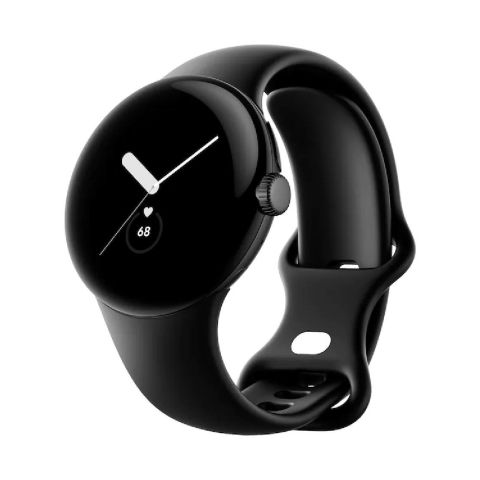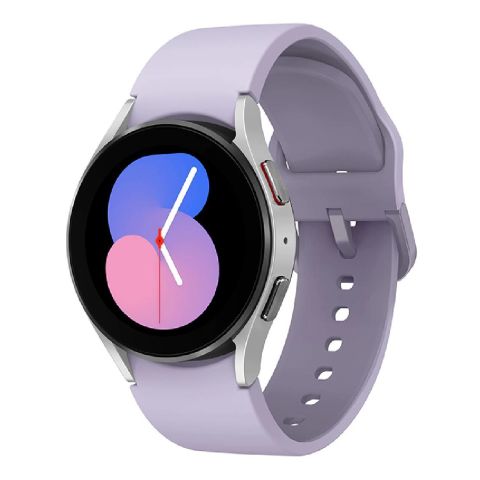[ad_1]
It’s time to talk about the Pixel Watch. Google’s very first smartwatch is finally here, and I’ve spent the past week learning whether it’s any good.
The Pixel Watch is basically a combination of two things: a smartwatch built to work in tandem with Google’s Pixel smartphones, and a Fitbit. The company is leaning heavily on making the Fitbit brand synonymous with this good-looking piece of hardware. After all, it has a great reputation in the fitness tracker market, and many users swear by it for all of their health data needs. So after Google’s acquisition of the company in 2019 for a cool $2.1 billion, it’s no wonder that the company is making it a cornerstone of the Pixel Watch’s appeal.
Google obviously needs a couple of those for the Pixel watch to succeed. It’s a premium watch by every metric, with a starting price of $349. I have the LTE model, which costs $399, and I was also given a couple of bands to check out.
Does the Pixel Watch do enough to earn a place on your wrist? Let’s find out.
The best watch for Pixel owners
If you own a Pixel phone or want a smartwatch with the full fitness capabilities of a Fitbit, the Pixel Watch is for you. Just note that its battery life falls behind the Apple Watch and Galaxy Watch.
A sleek, premium design with versatile band options

The second I took the Pixel Watch out of its box, I was struck by how good looking it is. Google did a killer job at designing the watch, from its minimalist footprint to the way the display glass curves dramatically to the sides. It’s made of recycled stainless steel with a glossy finish, and it comes in three colors: Champagne Gold, Polished Silver, and Matte Black (pictured here). It’s also water resistant up to 50 meters and dust resistant.
The closest thing you could compare the Pixel Watch to is a silky-smooth stone from a river. It’s really stunning. It goes against the design language of the Apple Watch, which historically has been a squircle and likely will remain that way for a while. On the other hand, the Pixel Watch is round like many other Wear OS smartwatches, but it’s by far the most beautiful of the bunch.
The size it comes in feels like a good middle ground. It’s not too small where it looks weird on larger wrists, yet it’s not too big to hang off of smaller wrists. It’s a tad bigger than the 41mm Apple Watch, which feels right for a watch that comes in a single size.
There’s a crown on the right side which can be rotated to sift through the user interface, and a button sits above it to give you quick access to recent apps. You can double-press either of them to pull up Google Wallet in a pinch. It all works just as you’d expect.
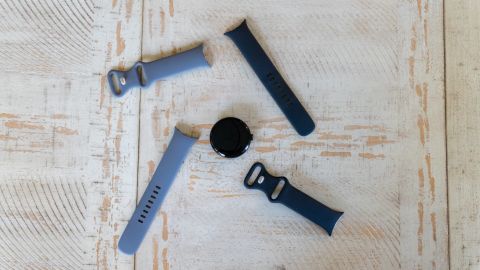
The band situation is pretty interesting. Google is using a proprietary connector, which slides into place in a way that the company describes is like attaching a new lens to a camera. I can’t say that it’s unlike attaching a new lens to a camera, since it operates almost the same way and it’s tricky if you’re not used to it.
I managed to get the process down pat (you’ve gotta hold down a little button with a fingernail to slide the band off or on), and I found that it’s perfectly fine and secure. This, of course, means you’ll need to buy bands that are specifically designed for the Pixel Watch and not some generic 20mm band like with other watches. Luckily, Google has some excellent, versatile options in its portfolio, like these $49.99 Active bands I’ve been testing which are lightweight and breathable. There are some fabric bands, too, as well as a couple of leather options if you want something classy.
Overall, there’s really nothing to complain about design-wise — everything is really well-rounded (pun intended).
Performance is solid, and Wear OS 3.5 is killer on the Pixel Watch
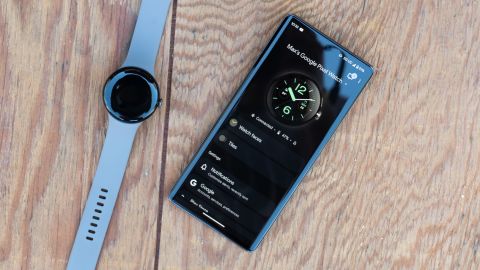
Once you fire up the Pixel Watch by long-pressing the crown, you’re greeted by Wear OS 3.5. It’s Google’s own take on the operating system, which it built with Samsung. We’ve seen the first version of this co-developed system on the Galaxy Watch 4 and Galaxy Watch 5, and now we’re finally getting a look at how Google interprets it.
The result? It’s excellent. The setup process is very straightforward and reminiscent of setting up a Pixel phone. You’re asked to download the Pixel Watch app which gives you the connection to your phone as well as various settings, and the rest of the time you’re learning how to actually use the watch. It’s all very simple, and it works with all Android phones with version 8.0 and up installed.
The default watch face might be a little vague for some folks, so you’ll be happy to know that the Pixel Watch comes with a variety of faces in tow, all of which are great to look at. I personally am a fan of the Pilot Bold face. Obviously, you can customize each face with different widgets, colors, and clock faces. It’s exactly what you’d expect from a smartwatch.
Wear OS Tiles make an appearance here, with swipes left and right sliding in new overlays with information like calendar events and fitness activity. These can be customized to your liking, which help make the watch feel more informative. Swiping down gets you quick controls, swiping up displays notifications, pressing the crown brings up all your apps, and rotating the crown scrolls the interface.

Speaking of which, all of the apps you expect to be here are here in full force. Things like Google Maps, Wallet, Gmail, Calendar, and YouTube Music have all been optimized for the watch, as well as other third-party applications in the Play Store. Each app has also been reformatted for the round display, which makes using them all the more delightful.
If this all sounds familiar, that’s because it is. Wear OS on the Pixel Watch might look a little different compared to other Wear OS watches, but it’s the same operating system, so the entire experience will feel welcoming and not foreign in any way. Even newcomers to the Wear OS world will be able to pick all of this up in a jiff.
The UI on the Pixel Watch is clean and minimalistic, while things like notifications and app management are delightfully simple. I also love how snappy the Assistant is on the watch. Overall, it’s the most enjoyable smartwatch experience I’ve ever used next to the Apple Watch — and yes, that even goes for the Galaxy Watch 5. It’s a terrific OS with a simplistic interface and excellent feature set.
In terms of software support, Google is guaranteeing up to three years of updates for the Pixel Watch. That’s pretty standard among Android phones, and it’s enough for a first-generation product. Hopefully, the second-gen Pixel Watch comes with four or five years’ worth of updates.
Fitbit integration makes health tracking simple and easy
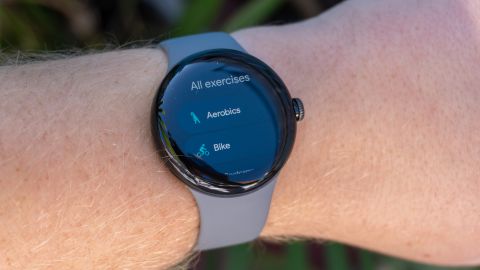
Google has made its Fitbit platform the default fitness tracking solution for the device, even placing the Fitbit logo right on the stock watch face. It’s a huge deal to see all the guts and glory of Fitbit make it onto a smarter smartwatch.
So is it any good? The short answer is yes. Google’s integration of Fitbit’s platform and services makes the Pixel Watch one of the best smartwatches to get if you’re a fitness enthusiast.
When you open the Fitbit app, you’d think you were using a traditional Fitbit. You’ll find over 40 workouts that can be tracked, from running to weight training to aerobics to canoeing and everything in between. It’s all laid out in an app that feels like a hybrid between a Pixel and Fitbit, while the smartphone companion app aims for a much more Fitbit-like experience.
What’s cool is Google is throwing in six free months of Fitbit Premium, which regularly costs $9.99 per month. Once you set up your watch, you can activate your free trial which will give you much more granular insights into your health, mindfulness tips, Stress Management Score breakdowns, and more.
All of this is powered by the advanced array of sensors Google built into the Pixel Watch. Using things like an optical heart rate monitor, multipurpose electrical sensor, altimeter, and blood oxygen monitor, the watch tracks your health metrics with impressive levels of accuracy. Compared to my Apple Watch and Withings ScanWatch (a hybrid smartwatch known for its exceptional health tracking abilities), the experience on the Pixel doesn’t vary almost at all. I recorded very similar results across all three watches during my testing with things like jogging on a treadmill and weight training.
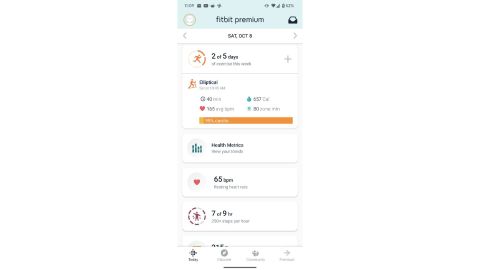
If there was one difference I noticed, it’s the heart rate sensor. It’s by far one of the most accurate I’ve ever used. Google touted it as a primary benefit of wearing a Pixel Watch while you worked out. The sensor records your heart rate much more often than other watches do, which help improve its accuracy and give you very precise readings. This data can then be used to warn you if the device believes you may have atrial fibrillation (AFib).
The Pixel Watch is also capable of recording ECGs, tracking your sleep with advanced sleep stage data (an incredibly valuable feature for me, who likes to stay up until midnight writing on a blue light-filled display), detecting falls, contact emergency services when you’re in an accident, and more. There’s really nothing missing from this watch — if there’s a fitness feature you expect to be on every smartwatch you buy, the Pixel Watch probably has it.
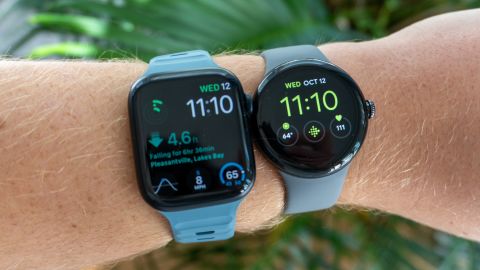
I really hate typing this, but the Pixel Watch can’t keep up with the competition when it comes to battery life.
The small 294mAh battery isn’t enough to give the Pixel Watch ample endurance to last as long as an Apple Watch or Galaxy Watch 5. Google claims it can last up to 24 hours on a full charge, and that’s technically true. I’ll take it off the charger at midnight to track my sleep, wake up with about 80 percent in the tank, and use it throughout the day. Sometimes, I have heavier days where I take a few phone calls, record a few fitness sessions, and play music. Those days, the watch is dead by dinner time. But if I use it lighter and mainly use it to check the time, I can get to about 11 p.m. the next day before it conks out.
If you’re super careful, you can stretch it to almost 24 hours of usage. But if you want to actually use the thing, you won’t get anywhere close. Oh, and turning off LTE didn’t do anything for me — I still had the same battery drain.
The charger Google includes is relatively snappy at least, as it can climb up to 50 percent from zero in around 35 minutes. Fun fact: it’s a Qi wireless charger, so you can place the Pixel Watch on any Qi charging pad you have around your home and juice it up. Who knew?
The screen is pretty small, and the bezel is huge
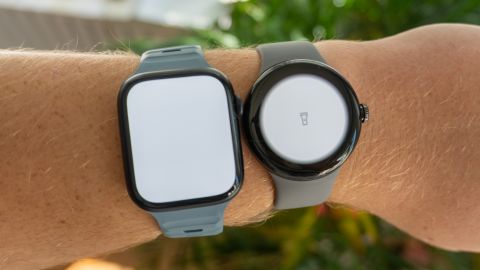
This one might just be me, but I think the screen on the Pixel Watch is just too small. It’s contained by a massive bezel that makes it feel even smaller, and everything I do on the watch feels unnecessarily cramped. It’s microscopic compared to the screen on my 45mm Apple Watch.
And folks, that bezel is indeed huge. You may have heard some chatter from the tech community about whether the bezel would be bothersome or not. I think it might be a matter of personal preference, but I’m definitely not a fan, and I don’t think Google is either. The company made sure to optimize Wear OS so that UI elements fade off along their edges to blend in with the bezel and make it seem like not such a big deal. Heck, even the flashlight has a gradient fall-off.
It’s an odd design choice, one that I hope only sticks around for a single generation.

As it’s suggested in the name, the Pixel Watch is mainly geared to work well with Pixel phones. The watch is technically compatible with all modern Android phones, but like Samsung’s watches and phones, you’ll have the best experience if you pair it with the right device.
I tried using the Pixel Watch with a Galaxy Z Fold 4, and the experience didn’t feel as smooth or connected. There’s no Fast Pair, for one (which was a little odd), and the setup experience with the Pixel Watch app didn’t go as smoothly with a couple of app crashes and some hang-ups when syncing my data. Other than that, the experience of using the two devices together didn’t vary too far from using the watch with my Pixel 7 Pro, although I did feel that notifications were a bit slower to come in.
It’s clear that Google built this watch as a companion to the Pixel phone, so you might want to consider picking those two devices up in unison if you plan on switching.
| Compatibility |
Android |
Android |
iOS |
|---|---|---|---|
| Display options |
41mm |
44mm, 40mm |
45mm, 41mm |
| Weight |
1.26 ounces |
1 to 1.18 ounces |
1.36 to 1.49 ounces |
| Water resistance |
50 meters |
50 meters, IP68 |
50 meters, IPX6 |
| Battery life (rated) |
24 hours |
40 hours |
18 hours |
| Key health and safety features |
Full Fitbit integration, optical heart rate sensor, blood oxygen sensor |
BioActive heart rate sensor, Advanced sleep coaching, Blood Oxygen, BIA sensor, Auto Workout Tracking |
Blood Oxygen, ECG, Temperature Sensing, Cycle Tracking, Crash Detection |
| Color options |
Champagne Gold, Matte Black, Polished Silver |
Graphite, Silver, Pink Gold |
Midnight, Starlight, Silver, Red (Aluminum); Graphite, Silver, Gold (Stainless Steel) |
| Price |
$349.99 |
$279.99 |
$399 |
Battery life and screen size aside, the Pixel Watch is truly an excellent Wear OS watch. If you’re coming from another Wear OS watch or have been holding off for one that can pair nicer with your Pixel phone, you won’t be disappointed.
Google struck a great balance of features, specs, and fitness tools to assemble what’s probably the closest Wear OS watch you can call the “Apple Watch for Android.” It’s a great starting point for the company as it navigates the smartwatch market, and I’m excited to see the second generation.
Should you buy it today? If you have a Pixel phone or are a fan of the Fitbit brand, this watch is a no brainer. The conversation gets a bit spottier if you own another phone like a Samsung Galaxy — in that case you should look toward the excellent Galaxy Watch 5.
But for everyone else, I think it’s worth checking out the Pixel Watch. It can only get better from there, and this is quite the impressive starting point for Google.
[ad_2]

